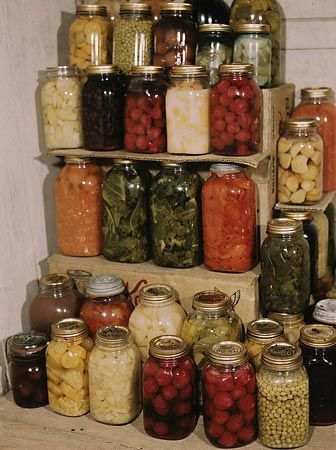Food preservation is a technique that has been practiced for centuries to extend the shelf life of food and prevent spoilage. Among various preservation methods, canning is one of the most popular and effective ways to preserve food for an extended period. This article explores the importance of food preservation and the process of canning.
The Importance of Food Preservation
Food preservation plays a crucial role in ensuring food security and reducing food waste. With the global population continuously growing, it is essential to find ways to preserve food to meet the increasing demand. Preservation also allows us to enjoy seasonal produce all year round, maintain nutrient content, and reduce the risk of foodborne illnesses.
Understanding Canning
Canning is a preservation method that involves packing food into airtight containers and heating them to destroy microorganisms that cause spoilage. This process creates a vacuum seal, preventing the entry of bacteria, yeast, and mold. Canned foods have a longer shelf life and retain their taste, texture, and nutritional value.
The Canning Process
The canning process typically involves the following steps:
1. Preparation
Before starting the canning process, it is important to gather all the necessary equipment, including jars, lids, canning tongs, and a water bath canner. The jars and lids should be thoroughly cleaned and sterilized to prevent contamination.
2. Food Selection and Preparation
Choose fresh and high-quality fruits, vegetables, or any other food you wish to can. Wash and peel the produce if necessary. Cut them into appropriate sizes and remove any unwanted parts.
3. Filling the Jars
Fill the jars with the prepared food, leaving appropriate headspace to allow for expansion during processing. It is important to follow specific recipes for each type of food to ensure proper canning.
4. Adding Liquid
Some foods require the addition of liquid, such as syrup or brine. Ensure the liquid completely covers the food, leaving the correct headspace.
5. Sealing the Jars
Wipe the jar rims to remove any food residue and place the lids on top. Secure the lids using jar rings, ensuring they are not too tight to prevent air from escaping during processing.
6. Processing
Place the filled and sealed jars into a water bath canner. The water should cover the jars by at least an inch. Bring the water to a boil and process the jars for the specified time according to the recipe.
7. Cooling and Storing
Once the processing time is complete, carefully remove the jars from the canner and place them on a towel or cooling rack. Allow them to cool at room temperature. Check the lids for proper sealing by pressing on the center; if the lid does not flex, it has properly sealed. Store the sealed jars in a cool, dark place.
Types of Canning
There are two primary methods of canning:
1. Water Bath Canning
Water bath canning is suitable for high-acid foods, such as fruits, pickles, and jams. The jars are submerged in boiling water for a specific time to destroy bacteria and create a seal. This method is simple and does not require specialized equipment.
2. Pressure Canning
Pressure canning is necessary for low-acid foods, including meats, vegetables, and soups. These foods require higher temperatures, which can only be achieved using a pressure canner. The increased temperature ensures the destruction of harmful bacteria like botulism.
Conclusion
Food preservation through canning is an excellent way to ensure food safety and minimize food waste. With the right equipment and proper techniques, anyone can make delicious and nutritious canned foods at home. Whether using water bath canning for high-acid foods or pressure canning for low-acid foods, preservation allows us to enjoy the flavors of fresh produce year-round while reducing our environmental impact.

